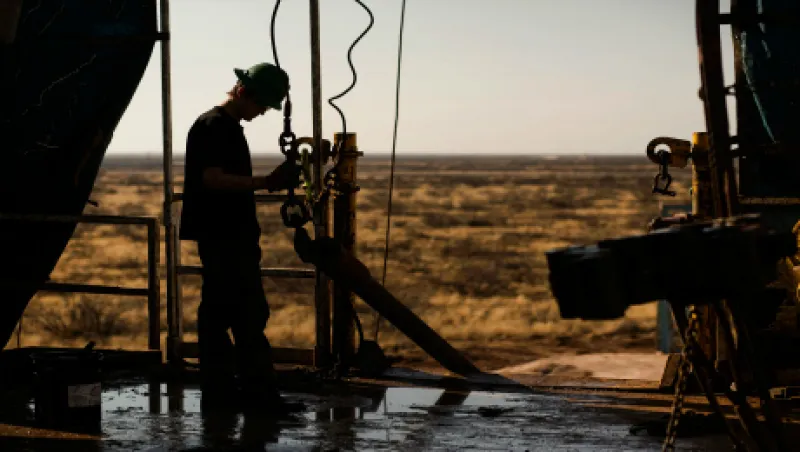With oil prices stabilizing and debt-ridden wildcatters increasingly pressured by creditors, a few brave investors have started to buy distressed U.S. shale oil assets. Peter Halloran is one of them. Halloran learned the value of getting in on a turnaround play early as a Credit Suisse banker in 1990s Moscow and later as chief executive of Russia-focused Pharos Financial Group. These days, he is chair of Dallas-based Titanium Exploration Partners, which this spring spent $272.5 million to buy some 410 wells in Oklahoma’s SCOOP/STACK shale basin from Houston-based Vanguard Natural Resources.
About 10 percent of those sites are currently pumping, producing 10,000 barrels of oil a day. Halloran claims that as long as crude prices remain above $35 a barrel, Titanium and its backers will earn at least a 15 percent return on their capital. West Texas Intermediate crude, the U.S. benchmark, was trading at $43.31 per barrel on July 27.
Another adventurous soul is David Zusman, managing partner of New York–based Talara Capital Management, which this past December spent about $45.5 million to acquire and pay off debt at Caza Oil & Gas, whose operations are concentrated in the Gulf Coast and the Permian Basin, which spans western Texas and southern New Mexico. “There are shale plays that require $80 a barrel to break even, and others that require $30 a barrel,” Zusman says. “You can move two to three miles and have a totally different geology.”
The death of shale oil was greatly exaggerated by headlines proclaiming that Saudi Arabia would keep loosening its production taps until the U.S. oil patch returned to dust and tumbleweed, says Deborah Byers, U.S. oil and gas leader in the Houston office of Ernst & Young. Riyadh’s play for market share over the past two years probably hit harder at other competing sources, such as deep-ocean drilling and high-cost oil sands in Canada and Venezuela. Shale, with its modest up-front costs and rapidly improving technology, is in a better position to bounce back and become the swing producer of the future.
“Shale isn’t less than it was advertised to be; it’s more,” Byers says. “The crash has made shale a lot more competitive and resilient than most people imagined.”
That is not to say the U.S. shale sector will return to its pre-2014 glory any time soon. Like the rest of the oil industry, it remains in the grip of a massive retrenchment that has seen the number of working North American horizontal rigs plummet from a peak of about 1,300 to just above 300 now, according to oil services giant Baker Hughes. That contraction has killed investor interest in marginal basins such as North Dakota’s Bakken Shale, which looks too remote from Gulf Coast refineries to be competitive at new-normal price levels. It has, however, spurred substantial cost-cutting and innovation in the more accessible fields of West Texas and adjoining states. The average time to drill a new well has shrunk from 33 days to 20, and once drilled it can produce 50 percent more oil and gas, Talara’s Zusman says. “It’s not just about buying oil,” he says. “You’re looking for an asset that is at a technological inflection point.”
Some areas, such as SCOOP/STACK, have actually become more popular over the past two years as yields from so-called offset wells, which must be reported to state governments, indicate a comparative advantage. “It’s like a neighborhood getting hot, like gentrification,” Titanium’s Halloran says. “You get data points by drilling, and more producers want to move in.” STACK got the equivalent of a massive redevelopment project late last year when Oklahoma City–based Devon Energy paid $1.9 billion to buy 80,000 acres there from Felix Energy, controlled by Houston-headquartered private equity power EnCap Investments.
The relatively low capital costs and short time horizon of shale production — most wells give most of their output within a year — leave it well positioned to act as global oil’s “accordion” producer, in Zusman’s phrase, for years to come. The Organization of the Petroleum Exporting Countries looks to be abandoning that role, given the enmity between ranking members Saudi Arabia, Iran and Iraq. Offshore drilling from the Gulf of Mexico to Brazil to West Africa, another major source of future supply, is much more expensive and less flexible than shale. “The short cycle for bringing shale online will put a sort of a ceiling on the oil price,” Ernst & Young’s Byers says. “Once it hits a sweet spot, a lot of people can come in over the next three months,” she says. “We see prices stabilizing around $60 to $65 over the next few years.”
With this year’s crude rally stalled out 25 percent below that sweet range, bigger money than that wielded by Halloran and Zusman remains largely on the sidelines. Eighteen months have passed since Stephen Schwarzman, chairman and CEO of top private equity financier Blackstone Group, declared that “oil is the biggest investment opportunity in the world.” But Blackstone and rivals such as EnCap and KKR are still keeping billions of dollars in energy-earmarked powder dry.
That’s not surprising, Zusman says. Given shale’s idiosyncratic geology, success at subdued prices demands matching exactly the right deposit with an operator who intimately understands it. That is hard to do wholesale. “You have to find a local team for a local opportunity,” he says. “You can’t take a guy who has worked in the Bakken and just throw him into the Permian.”
Byers echoes that sentiment. “There will be opportunities in shale, but not a land rush.” Devon’s big acreage purchase in the STACK basin is so far an exception.
Talara and Titanium have another $500 million or so each to spend. They are searching for new purchases — but being picky. “We see a nice market now around the $100 million check size,” Zusman says. “On the other hand, we looked at 50 deals last year, and did one.”






